What is “Potting Seedlings Up”?
In the last post, we talked about how to plant seeds to germinate them and this post we will address potting seedlings up. When the seedlings get big enough, they are ready to move to a bigger environment. That’s called “potting up.” The following tips lead you to successfully move your baby seedlings into a slightly bigger home.
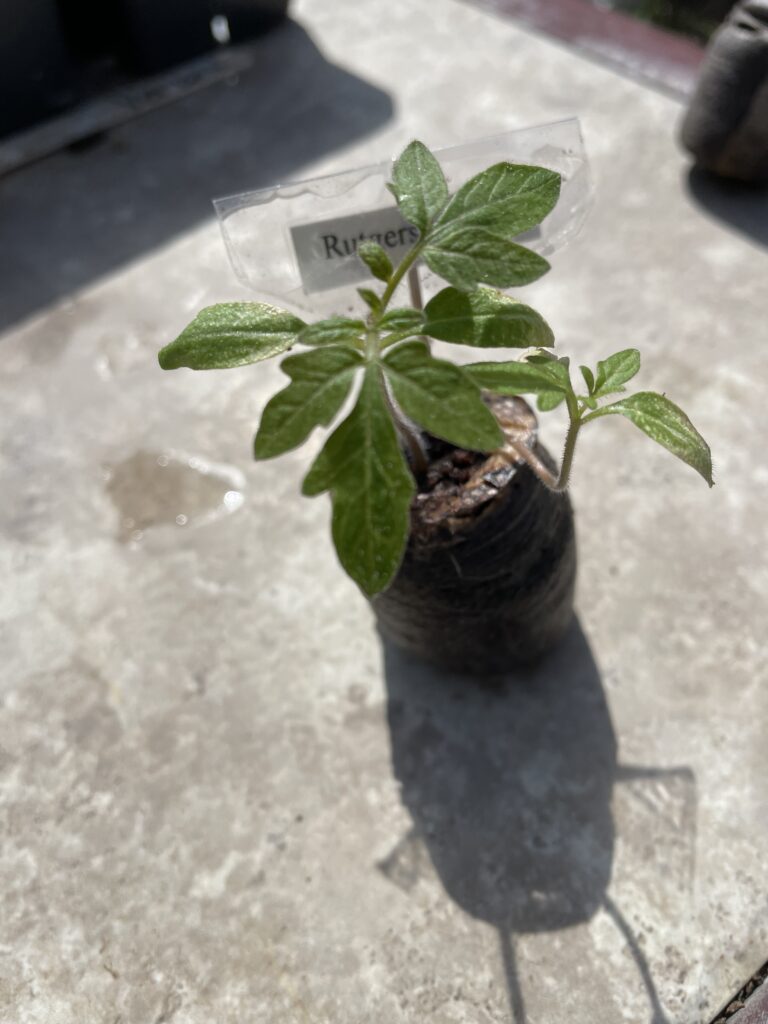
[This post contains affiliate links. That means that if you make a purchase after clicking on a link I may earn a small commission at no extra cost to you. For more information, click here.]
Wait for True Leaves Before Potting Seedlings Up
After what seems an eternity of your eyes glued to the potting pellet or tray, you will finally see a tad of green. The first couple of leaves you see emerge from the soil come from the nutrients in the seed itself, and are usually rounded. Soon the plant will put on the next set of leaves which are bigger and stronger. These are called “true leaves”.
When the seedlings start to put on their true leaves, it is time to begin potting seedlings up. You want to move them up to a 3- or 4-inch pot so that they can grow into a good size before planting out in the garden. Don’t wait too long. If you wait too long to pot the seedlings up, they may be permanently stunted and not grow into a healthy plant once you put it in the garden. As in many things in gardening, the “Goldilocks rule” applies. Not too little, not too big. Just right.
The writer of gardenmyths.com argues that when potting up seedlings you should use the biggest pot you can. That may be true, but I have a limited budget for potting soil, and limited space for keeping my seedlings. What I would take away from his advice is that you should never let a plant become root bound because it is going to affect the health of the plant whenever you move it to the garden.
Fill Your Pots with Potting Soil
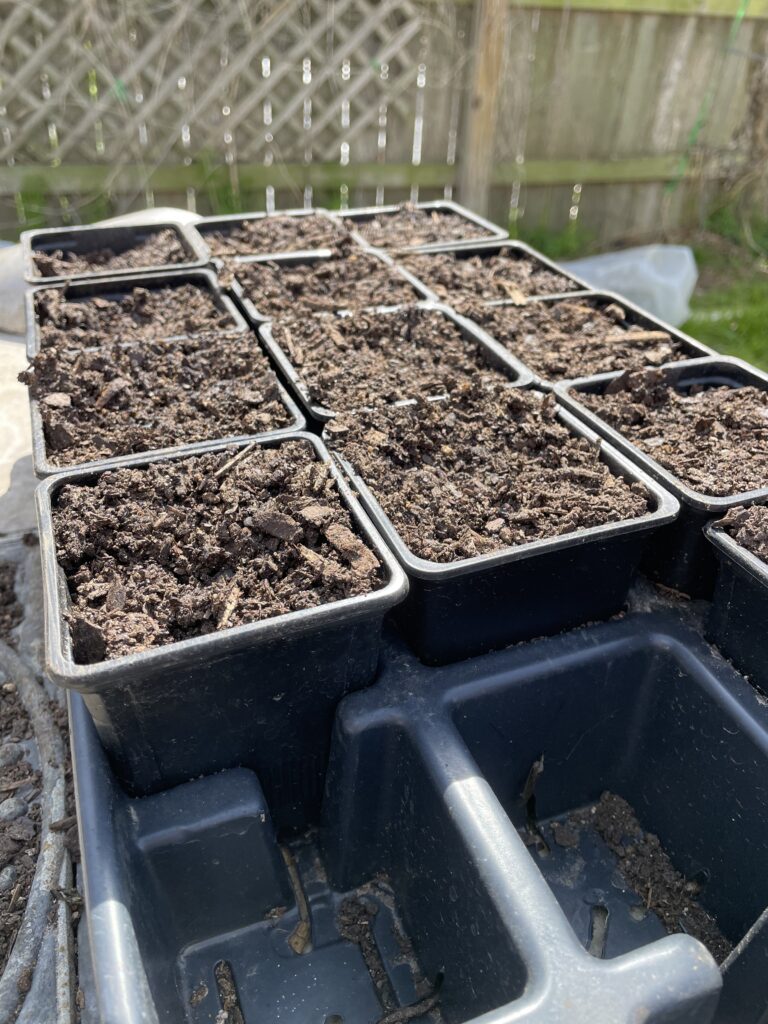
When potting seedlings up, use a good, organic soil mix. Fill your pots to within 1/2 inch of the top. Don’t fill it too high, because when you water, you want the water to pool at the top just before it goes into the soil. If you fill it too high, the water will slide off. Shake the pots to settle the soil, and water thoroughly.
Make a hole the size of the seedling’s root system which is likely the size of the hole it has been growing in. Depending on the size of the seedlings’ root ball, one or two fingers work fine if you don’t have another tools.

Remove the seedling from the tray or wrapper. If you have used a peat pellet, gently pull off the wrapper the seedling has been growing in..
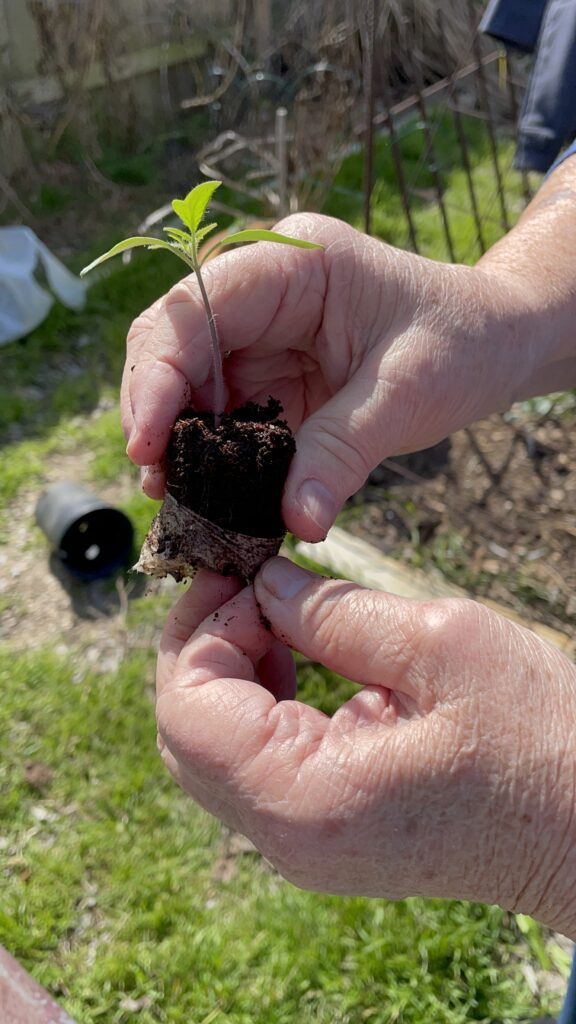

If your seedlings have been growing in a tray, a fork is a good tool to remove them from the cells of the tray. Gently lift them out of the seedling cells.
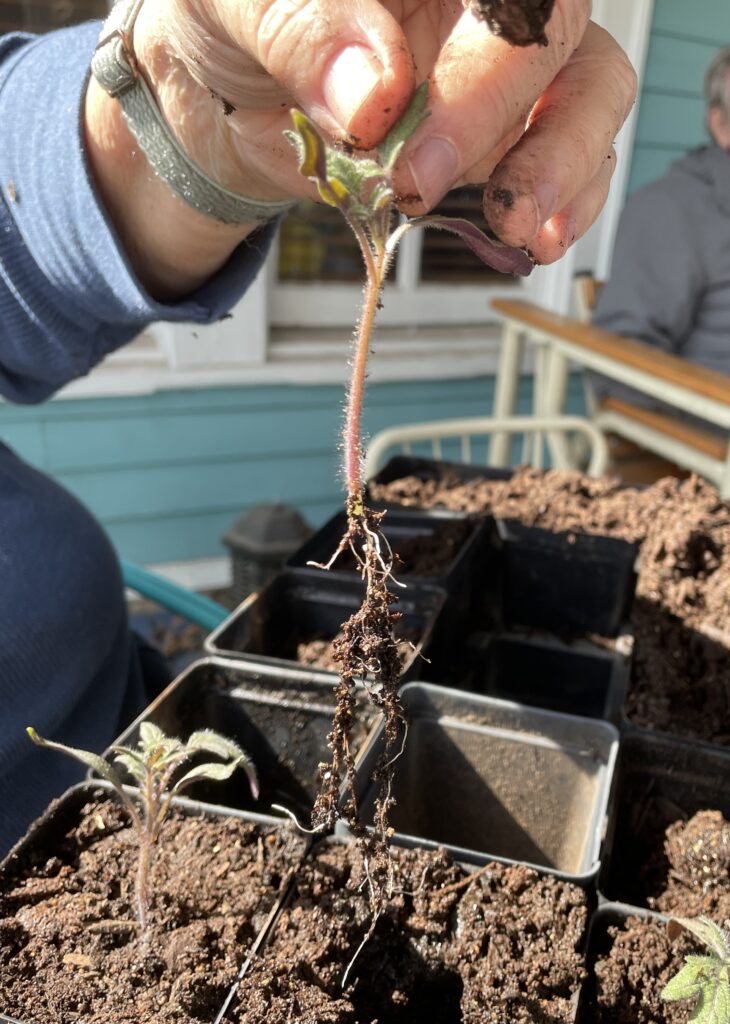
The physical act of potting seedlings up requires you to treat those darlin’ babies just like you would real babies: very, very gently.
Don’t Pick Up Your Seedlings by the Stem When Potting Up
Unless you are very, very dexterous, it is almost impossible to pick it up by the stem and not damage it. Their lifeline to the world is their little stem, and it is very easy to damage it. That’s where the seedling gets all its water and nutrients to grow bigger, so damaging it may be a death sentence. When moving the seedling, hold on the biggest leaf (hopefully a true leaf).
Place your little seedling gently in the hole you have made in your new pot.
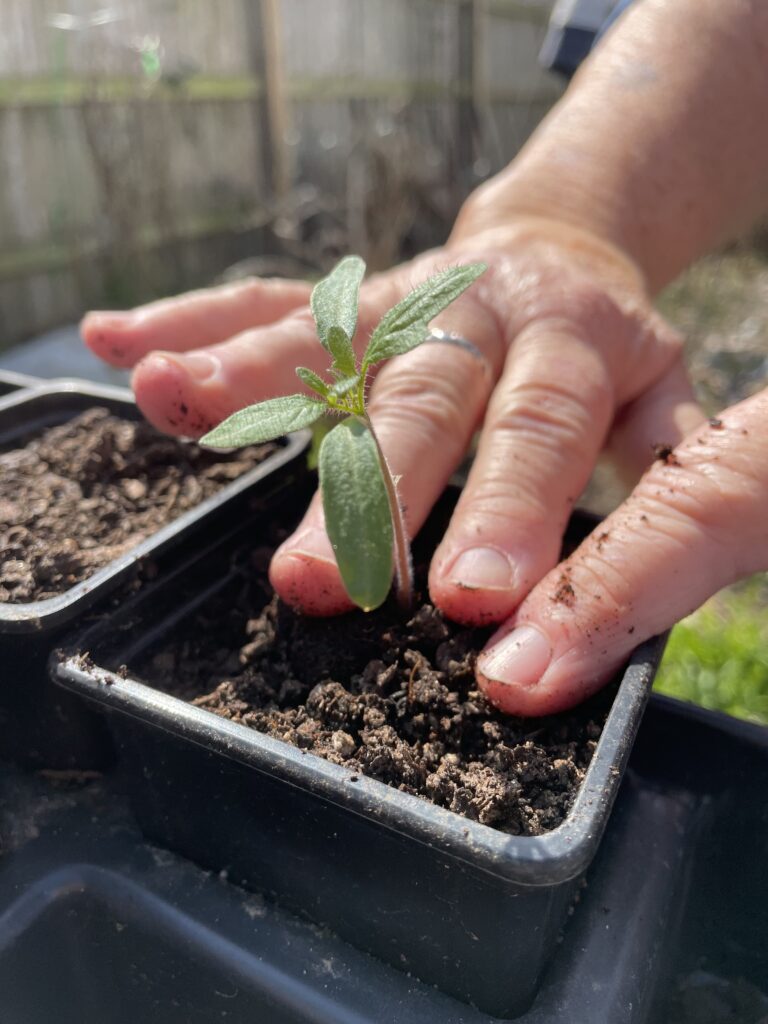
Planting Depth
Most seedlings should be planted even with the soil line of the location they have been growing. The most notable exception is tomatoes which should always be planted as deep as possible. The tomato will grow roots along the stem. Other plants don’t grow roots along the stem and planting them too deep can cause the stem to rot. Again, a death sentence.
Press the potting soil against the seedling firmly but not too hard. The idea is to let the roots be surrounded by soil and not air pockets.
Then water gently and thoroughly, which should also serve to remove any remaining air pockets. There you go! A genuine potted up seedling!
Make Changes Slowly
Now that you have the seedling potted up, the temptation is to run the pots outside into the sun. Unless you have been growing the seedling outdoors in the sun, this is not a good idea.
Never change the growing environment of the newly potted-up seedlings too rapidly. If your seedlings have been growing in the shade or under a grow light, give them a dose at a time of pure sunlight. Of course, if this is a shade-loving plant, try to move it to the shade in the early days. A dose at a time is also important if the temperature is going to very different for them than which they have been growing.
Keep a close eye on the babies at this stage because they need to recover from the shock of transplanting. Sunlight and temperature can be an additional stressor for the babies, and may make the difference between the baby growing into a toddler or ending its life in the compost pile.
In another month or so, it will be time to put this wonderfully grown-from-seed plant into the garden, but that is another story.